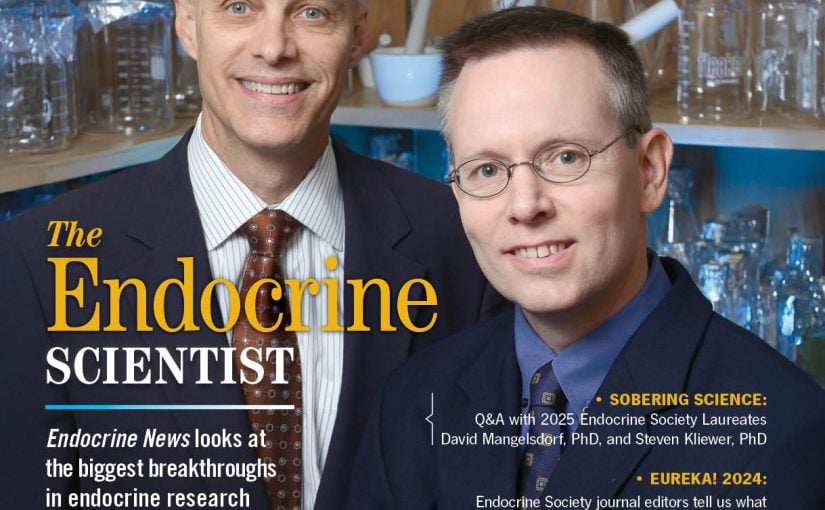While patient health and insurance coverage have garnered recent headlines, the physicians who provide their care are experiencing high levels of stress in dealing with changes happening in the industry.
In a new Physician Lifestyle Report published by Medscape, nearly 40% of endocrinologists reported being burned out—defined as a loss of enthusiasm for work, feelings of cynicism, and a low sense of personal accomplishment. More than 24,000 physicians participated in the survey, and endocrinologists ranked 14th among the list of 24 specialties. Physicians in emergency medicine and critical care topped the list with the highest levels of burnout.
Burnout in endocrinology varies by gender and age, according to the survey. Many more female endocrinologists reported burnout than men (54% vs. 33%). And the symptoms peak fairly early in the career, with 28% of endocrinologists aged 36–45 years reporting burnout compared with 23% between 46 and 65 years of age.
Finding the Cause
When asked what factors contribute to their feelings of burnout, leading the list of endocrinologists’ complaints were: too many bureaucratic tasks, long work hours, insufficient income, and the impact of the Affordable Care Act.
For Todd Brown, MD, PhD, associate professor of medicine in John Hopkins University’s Division of Endocrinology and Metabolism, although hearing the number of endocrinologists reporting burnout was surprising, he understands the reasons.
“It has been more difficult to practice medicine lately,” he says. “There are more administrative duties than previous and it’s only getting worse, in terms of insurance approvals, documentation, and all things that people didn’t use to have to deal with in practicing medicine when they could just focus on forming relationships with their patients and treating them the best way they can.”
“It doesn’t bode too well for the medical profession,” Brown adds. “I think people are still interested in the field, but I think there’s some idealism that quickly goes away.”
A 2012 article in the Archives of Internal Medicine also showed similar results of physician burnout. Physicians suffered more than any other U.S. worker surveyed with almost 46% reporting at least one burnout symptom. So what explains the divide between professions?
“Th e biggest problem is that as a society, the professional class has clearly bought into the notion that more work to create more wealth is the only thing that can insulate us from all this bad news,” suggests John Buse, MD, division chief of the Diabetes Center at the University of North Carolina at Chapel Hill.
“People work too hard to make too much money to buy too many things that they do not need based on marketing messages that bombard us with the news instead of doing what they love,” he adds.
Finding Solutions
“Burnout is not an individual problem, it’s an environmental problem,” explains J. Bryan Sexton, PhD, psychologist and associate professor and director of Th e Patient Safety Center for the Duke University Health System.
“If you work at a hospital or clinic, you are highly susceptible to burnout,” he continues. “And if a doctor is burned out, then the secretaries, nurses, and IT people are most likely miserable as well.”
Sexton is an expert in patient safety and a few years ago realized his quality improvement projects were not achieving the desired results. He traced the cause to the stress and burnout symptoms of the hospital staff.
“Our work-life balance was awful,” Sexton recalls. “Our staff wasn’t taking care of themselves, they weren’t eating well, not sleeping, and not seeing their families for days on end.”
“Th e burnout level in a clinical area predicts everything, including clinical outcomes, mortality rates, patient satisfaction, staff turnover, and disruptive behavior rates,” he adds. “We found that clinical outcomes improved when burnout was low.”
It was then that Sexton shifted his focus to helping healthcare workers better cope.
He developed the “Enhancing Caregiver Resilience: Burnout & Quality Improvement Full Course”—a threeday course with CME credits offered at Duke twice a year in May and November and attended by more than 3,500 healthcare workers annually. It’s also available as a webinar series www.dukepatientsafetycenter.com.
The resiliency course teaches participants 17 different tools, all based on social science, to cope with burnout. The first step is explaining the prevalence and severity of the condition and also includes coaching on fatigue management and self-reflection.
No matter what, experts agree that taking time for leisure activities is critical to staving off burnout. Some good news from the Medscape survey: 60% of endocrinologists exercise at least twice a week, and 65% take more than two weeks of vacation leave each year.
“I think the path to happiness is to recognize that money is not adequate compensation for our time if we do not enjoy doing what we do,” Buse says. “You should be resting or being with those who you love.”
—Glenda Fauntleroy is a freelance writer based in Carmel, Ind.

